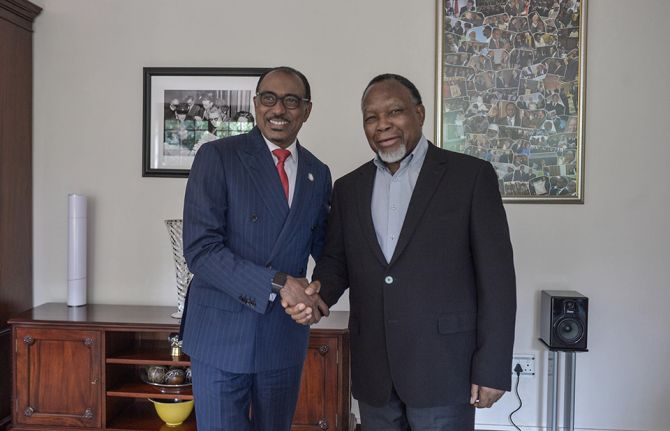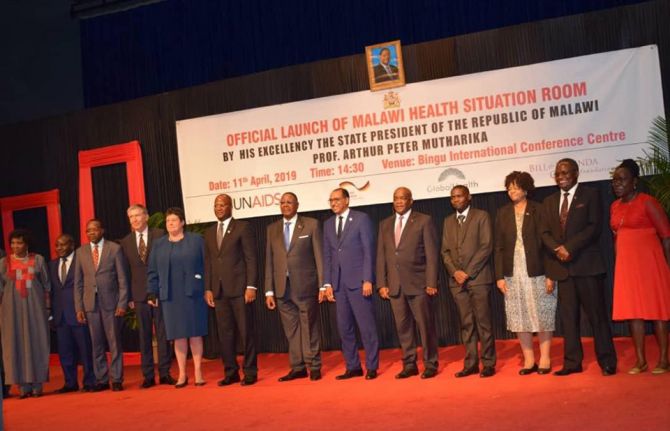
Feature Story
Integrating the AIDS response with broader health and development agendas
10 June 2011
10 June 2011 10 June 2011
Ms. Francoise Barré-Sinoussi, Nobel Lauréate, Institut Pasteur, France; Ms. Aditi Sharma, International Treatment Preparedness Coalition; at Panel 5: Integrating the HIV AIDS Response with Broader Health and Development Agendas, held at UN Headquarters, NYC, on June 10, 2011.
UNAIDS/B. Hamilton
Taking AIDS out of isolation and into integration was the focus of the final official panel discussion on the closing day of the UN General Assembly High Level Meeting on AIDS.
Chaired by His Excellency the Second Vice-President of Burundi Gervais Rufyikiri, the panel was moderated by Laurie Garrett Senior Fellow for Global Health at the Council for Foreign Relations and brought together Nobel lauréate Francoise Barre-Sinoussi from the Institut Pasteur; civil society representative Aditi Sharma from the International Treatment Preparedness Coalition; UN Secretary General’s Special Envoy to Stop TB Jorge Sampaio and Norwegian State Secretary for Health State Secretary Ragnhild Mathisen.
Linking HIV to health and development
Thirty years into the HIV epidemic, AIDS has become an integral part of countries’ health and development challenges. But we need to strengthen these links to achieve universal access and ensure sustainability of the HIV response. Panellists identified key benefits and core elements for integrating HIV with other health and development agendas and discussed how the strengths of the AIDS response can be leveraged to the benefit of these issues.
“HIV responses cannot operate in isolation. Further scale up requires functioning integrated health systems and communities that are empowered through access to essential rights and goods, including food, nutrition and basic education,” said Francoise Barre Sinoussi.
The panel highlighted the lessons from integration of HIV and tuberculosis (TB) programmes and services and discussed links with sexual and reproductive health services and maternal, newborn and child health services, including efforts to eliminate new HIV infections among children and keeping their mothers alive. Mr Sampaio made a passionate plea to implement the recommended package of integrated TB/HIV services in order to prevent one million TB deaths in people living with HIV by 2015.
It was also noted that, as access to antiretroviral therapy expands, the HIV response is evolving from a disease-specific emergency response to a chronic disease management challenge which needs to be addressed within the context of other chronic health conditions. Many countries with a high HIV prevalence are also facing burgeoning epidemics of other chronic infections, such as Hepatitis B and C, and non-communicable diseases (NCD), such as cardio-vascular and chronic respiratory diseases and diabetes.
The panel emphasized that the benefits of an integrated approach to TB and HIV service-delivery to patients, programmes and partners are reflected in better access to comprehensive care, cost savings and reduced morbidity and mortality. Brazil’s combined approach to HIV and Hepatitis C was cited as an example of integrated, client centred approach. Similarly, the prevention of mother-to-child transmission of HIV—including treatment and care for mothers and their children—was highlighted as an integral and critical components to achieve Millennium Development Goal (MDG) 4 and MDG 5 and the UN Secretary-General’s ‘Global Strategy for Women’s and Children’s Health’.
The time is right, concluded the panel, to explore ways in which the scale up of HIV prevention, treatment, care and support may be leveraged to strengthen not only high-quality health services during specific periods of life—such as pregnancy and childhood—but responses to a range of other health conditions and development challenges development issues for example food security, poverty, drug dependence, human rights and gender. Mitigating the impact of HIV is therefore essential to achieving MDG 6 and other development goals.
Watch the event
External links
External links
Publications
Publications
Related
 Keeping up the momentum in the global AIDS response
Keeping up the momentum in the global AIDS response

24 April 2019
 Malawi launches its health situation room
Malawi launches its health situation room

12 April 2019
 Learning lessons on evaluation
Learning lessons on evaluation

02 April 2019
